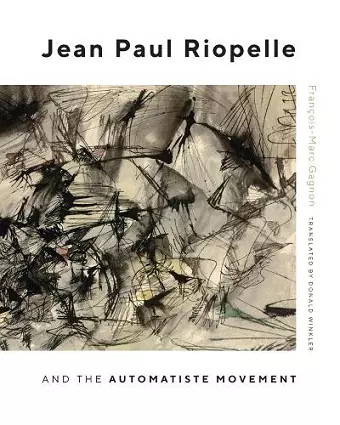Jean Paul Riopelle and the Automatiste Movement
Format:Hardback
Publisher:McGill-Queen's University Press
Published:23rd Sep '20
Currently unavailable, our supplier has not provided us a restock date

A revealing reading of Jean Paul Riopelle's artistic method through the enduring influence of a short and intense involvement with the Automatiste movement.
The artist Jean Paul Riopelle is best known for his renowned mature abstract style. In this fascinating history, François-Marc Gagnon begins with the artist's first paintings and his early commitment to objectivity to explore Riopelle's involvement with the Automatiste movement and its lasting impact on his work. Gagnon traces Riopelle's early development from the traditional figurative style imparted by his first teacher, Henri Bisson, through a turn toward the subjective on seeing a travelling exhibition of Dutch art that included the works of Vincent van Gogh, to Automatiste experiments in an alley studio in Montreal where he painted with Marcel Barbeau and Jean-Paul Mousseau. As early as 1946, Riopelle was an Automatiste emissary in Paris, organizing the first group show there. In spite of the perception that Riopelle was ideologically disinterested, Gagnon shows that he was in fact instrumental to the publication of Refus global – which includes his art on its cover – and publicly defended the manifesto amid controversy in both artistic and intellectual circles in Quebec. Initially devoted to the Automatiste notion of painting without preconception, by 1949 Riopelle was breaking into a markedly individual style in which the idea of chance was central. Gagnon reads this approach through Riopelle's own work and testimony, placing it in careful conversation with writing by philosophers and theorists on the role of chance in creativity. Gagnon also makes use of formal analysis of Riopelle's style and technique as he abandoned the paintbrush to work exclusively with the spatula. The well-established narrative of Jackson Pollock's influence on Riopelle is tested – and found wanting – in the first extended examination of Riopelle's relationship to American painting and to Pollock in particular. Demonstrating the qualities of scholarship and writing that were the hallmark of Gagnon's long career, his last book is engaging and clear and stands out for its originality, integrity, and profound insight into the work and milieu of the artist that André Breton called "the peerless trapper."
"This fascinating, important, and superbly structured book has the effect of asserting Riopelle's originality not only with respect to the Montreal Automatistes, but also to American painting and to Pollock in particular. Jean Paul Riopelle and the Automatiste Movement stands out for its originality, its profound insights, and the beauty of its language." Lora Senechal Carney, author of Canadian Painters in a Modern World, 1925–1955: Writings and Reconsiderations
"This well-illustrated study of Canadian abstract painter Jean Paul Riopelle (1923–2002) examines the artist's student days in the early 1940s at Montreal's École du Mueble and his work in the decade following, work often compared to the widely celebrated paintings of Jackson Pollack. In the present book the late Gagnon (whose father was a contemporary of and commentator on Borduas and the Automatistes) links Riopelle's independent and rebellious temperament to technique. When Riopelle broke with the Automatistes, abandoning subconscious influence for a realm of total chance, he declared, "When I hesitate, I don't paint: when I paint, I don't hesitate."" Choice
ISBN: 9780228001157
Dimensions: unknown
Weight: 454g
224 pages